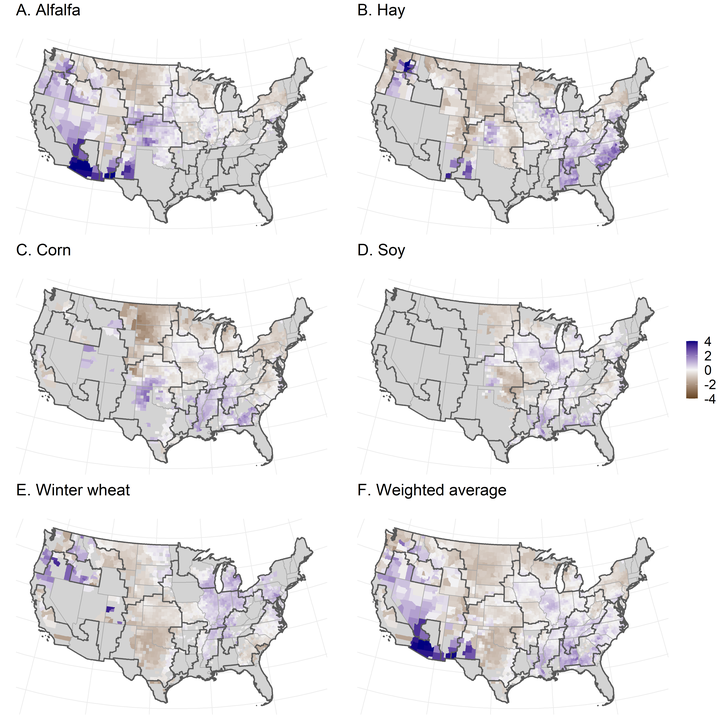 Figure from paper
Figure from paper
Abstract
We examine the geographies of agricultural yields in the United States, home to some of the most productive agricultural systems on the planet. We model and map yield divergence from biophysical expectations and regional norms for five major crops-corn, soy, wheat, alfalfa, and hay-and assess how this divergence interacts with farm-level resources, farm(er) characteristics, and landscape context. Our results highlight the ways in which human activity has reinforced and intensified the yield geographies defined by sun, soil, and water alone. Yield gains brought by human activity are strongly associated with increased expenditure on inputs to production and receipts from federal programs, but not with net revenue gains for farmers. These yield gains vary across operator race, gender, farm size, and major U.S. region. We also find that beyond a threshold, increased input expenditure is associated with marginally decreasing yields, raising important questions about the interactions between yields and farmer livelihoods. We conclude by discussing the importance of broadening the production-centric paradigm that has dominated agricultural innovation over the last century to include the well-being of the farmers and ecological systems on which agricultural production ultimately depends.